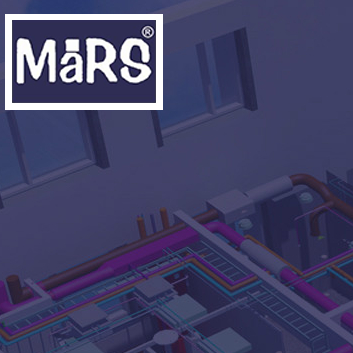Technical Area | Articles
The place to solve all your BIM doubts
BIM Collaboration : How to Get All Parties on the Same Page
BIM Implementation 3D / VDC Collaborative Processes & Tender Corporate Work Operation Workflows BEP
BIM collaboration is nothing new for the AEC industry. Right when the process of BIM was introduced, collaboration was prevalent. Over the years with advanced techniques, this only increased its capacity, and incorporating collaborative efforts in a project became easier.
The process of coordination starts right after the construction documents are finalized and sent for submission. During this final submission of documents, the BIM models are submitted to the contractor as well and there his role comes in. Following this, the contractor starts with the creation of coordination models. Different teams utilize different elements of the modeling and hence, the design models are provided to respective teams for them to remodel it as per their requirements. This is done by copying over the existing designs or else by modeling them as new ones.
The adoption of BIM leads to forming a constant flow of information. The information collection happens virtually on the digital platform and is available on that remotely from anywhere. It stays as it is through the building life cycle. That is why it is crucial to make the 3D BIM Modeling right with of utmost accuracy. The greater the BIM model will be, the better the collaboration between parties can be.
There are definitely numerous advantages that come with the BIM collaboration process if that is integrated into a project. But for a construction project, there are multiple challenges and obstacles faced by the users regarding executing the designs appropriately.
Without exact information or loss of data exchange, there are many discrepancies in the result, leading to delays in deliveries, poor management, exceeding cost and budget, and over-utilization of resources. But in a properly formed workflow and collaborative design model, many advantages are found. Adopting BIM for multidisciplinary functions increases the overall quality, defines standards, and produces a greater level of communication and open workflows. The multidisciplinary approach provides by Building information modeling makes it possible, to manage such an amount of data and information for different aspects of the project.
The different parties in a project who are said to be the prime beneficiaries of BIM collaboration are the contractors, sub-contractors, manufacturers. The modeling technique used, depends on the sub-contractor and the business requirements. The contractor who works on the models has there own BIM family that is based as the valves and fittings in the space. The equipment that is given in the submitted document is replicated in the model and the design is made to fulfill that. The manufacturer family provides information regarding the equipment accurately. In case when the manufacturer does not have any available model, a general model is used. Once this coordination model is completed, then starts the process of clash detection and reporting of the models of various disciplines.
This whole procedure entirely depends on the types and greatness of the project. When the project size is big, the modeling starts earlier, much before the construction takes place. This is done to shorten the complete timeline of the project and to get the right collaboration and coordination when starting with the actual construction.
It is the contractors who have a complete understanding and knowledge of the piping, duct, and connection of types of equipment and this knowledge helps them in positioning these elements in their model perfectly. This results in a quality clash report at the stage of construction as compared to the designing stage. Also, the contractors have knowledge of the right tools and equipment that are to be set in a building. This enables them to develop an all-around model showcasing relevant features. It helps the managers and owners to get the design with everything combined in it.
When the project is completed, the owner of the project gets the final delivery of the complete coordination model from the contractor. This final model provides accurate as-built documents of each element built throughout the project. These models also consist of the 3D representation of every piece of equipment, accesses, tools, and clearances that are coordinated during the design stage and actual construction. This also confirms if clash detection was used properly and clashes resolved as they should have been.
After this, the BIM model stays for the entire life cycle and at any stage, the owners can give the BIM models to consultants for any kind of renovations or in the future or additions. The presence of such a comprehensive model decreases the extra costs that otherwise would prevail for the 3D scanning of the existing building. In total, reporting acts as a very valuable possession for the owners. It not increases the quality of construction but also enhances the life of the project and can be used in the long run.
MaRS BIM is a skilled BIM Services agency providing BIM collaboration for years. It has developed numerous projects facilitating BIM collaboration. The experience the engineers have is nonparallel and that is why it has been possible for MaRS to have worked excellently on so many projects. With great quality and precision in clash detection and coordination, exceptional quality BIM models have been produced in these last two decades. MaRS has worked with global companies and international projects with great complexities which have provided outstanding results to the users.
The process of coordination starts right after the construction documents are finalized and sent for submission. During this final submission of documents, the BIM models are submitted to the contractor as well and there his role comes in. Following this, the contractor starts with the creation of coordination models. Different teams utilize different elements of the modeling and hence, the design models are provided to respective teams for them to remodel it as per their requirements. This is done by copying over the existing designs or else by modeling them as new ones.
The adoption of BIM leads to forming a constant flow of information. The information collection happens virtually on the digital platform and is available on that remotely from anywhere. It stays as it is through the building life cycle. That is why it is crucial to make the 3D BIM Modeling right with of utmost accuracy. The greater the BIM model will be, the better the collaboration between parties can be.
The advantages that BIM collaboration provides
There are definitely numerous advantages that come with the BIM collaboration process if that is integrated into a project. But for a construction project, there are multiple challenges and obstacles faced by the users regarding executing the designs appropriately.
Without exact information or loss of data exchange, there are many discrepancies in the result, leading to delays in deliveries, poor management, exceeding cost and budget, and over-utilization of resources. But in a properly formed workflow and collaborative design model, many advantages are found. Adopting BIM for multidisciplinary functions increases the overall quality, defines standards, and produces a greater level of communication and open workflows. The multidisciplinary approach provides by Building information modeling makes it possible, to manage such an amount of data and information for different aspects of the project.
The different parties in a project who are said to be the prime beneficiaries of BIM collaboration are the contractors, sub-contractors, manufacturers. The modeling technique used, depends on the sub-contractor and the business requirements. The contractor who works on the models has there own BIM family that is based as the valves and fittings in the space. The equipment that is given in the submitted document is replicated in the model and the design is made to fulfill that. The manufacturer family provides information regarding the equipment accurately. In case when the manufacturer does not have any available model, a general model is used. Once this coordination model is completed, then starts the process of clash detection and reporting of the models of various disciplines.
This whole procedure entirely depends on the types and greatness of the project. When the project size is big, the modeling starts earlier, much before the construction takes place. This is done to shorten the complete timeline of the project and to get the right collaboration and coordination when starting with the actual construction.
It is the contractors who have a complete understanding and knowledge of the piping, duct, and connection of types of equipment and this knowledge helps them in positioning these elements in their model perfectly. This results in a quality clash report at the stage of construction as compared to the designing stage. Also, the contractors have knowledge of the right tools and equipment that are to be set in a building. This enables them to develop an all-around model showcasing relevant features. It helps the managers and owners to get the design with everything combined in it.
The Final Delivery
When the project is completed, the owner of the project gets the final delivery of the complete coordination model from the contractor. This final model provides accurate as-built documents of each element built throughout the project. These models also consist of the 3D representation of every piece of equipment, accesses, tools, and clearances that are coordinated during the design stage and actual construction. This also confirms if clash detection was used properly and clashes resolved as they should have been.
After this, the BIM model stays for the entire life cycle and at any stage, the owners can give the BIM models to consultants for any kind of renovations or in the future or additions. The presence of such a comprehensive model decreases the extra costs that otherwise would prevail for the 3D scanning of the existing building. In total, reporting acts as a very valuable possession for the owners. It not increases the quality of construction but also enhances the life of the project and can be used in the long run.
MaRS BIM is a skilled BIM Services agency providing BIM collaboration for years. It has developed numerous projects facilitating BIM collaboration. The experience the engineers have is nonparallel and that is why it has been possible for MaRS to have worked excellently on so many projects. With great quality and precision in clash detection and coordination, exceptional quality BIM models have been produced in these last two decades. MaRS has worked with global companies and international projects with great complexities which have provided outstanding results to the users.
Software
AutoCAD Revit Synchro Pro Revit MEPSource: https://www.marsbim.com











